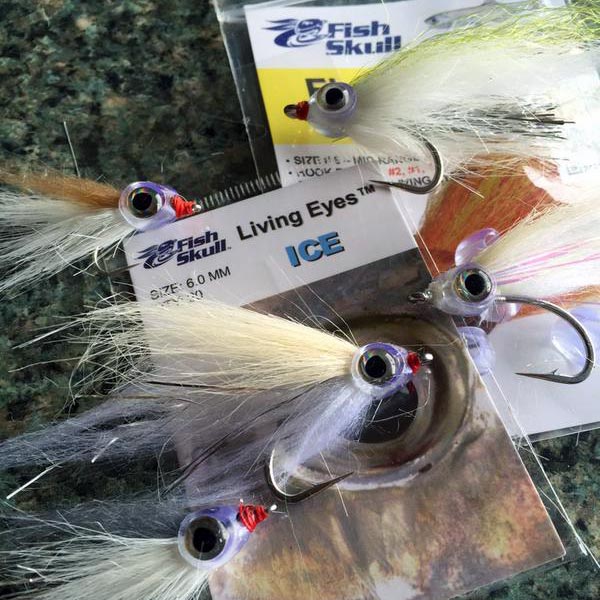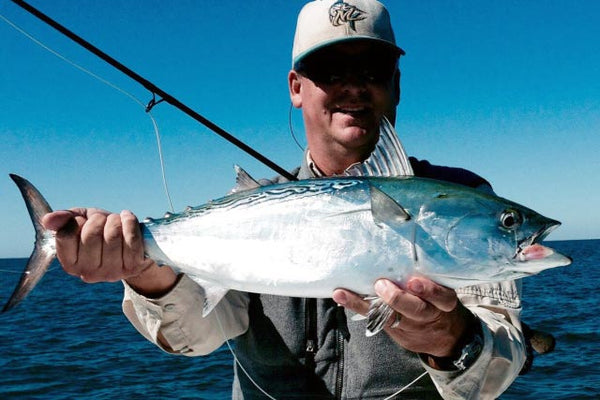Fly fishing for false albacore: 4 things you're doing wrong.
You're fly fishing for false albacore and the fish are coming in fast and furious. People all around you are hooking up. You are not.
Why?
It's frustrating as being the last guy in the line to get cake and they run out as soon as it's your turn.
Don't despair – here are 4 things to pay attention to that you may not be.
1. You're not getting it in there.

Oh, you think you are. You saw the fish bust the surface and you got it right in there. When you didn't get a bite you wondered what was wrong and the first thing you thought of was to change your fly.
Not so fast. By the time your fly got there the fish were already down or the baitfish were already gone.
These fish all swim fast! Even the little bait guys move faster than you'd think. Most of the time the visibility is not conducive to seeing where the baitfish are and so you may think you've made a great cast but in reality the fish are already gone.
Number one problem: Too much false casting. Get it in there faster.
Number two problem: Not casting far enough. If you can't reach them, you can't catch them.
Practice, practice, practice.
You wouldn't dare step onto a basketball court until you had practiced, right?
It's no different than stepping onto the rapidly rising and falling bow of a center console fishing boat and trying to cast to and catch false albacore that can swim 40 mph.
2. Your fly isn't right.

I know I just said it's probably not your fly.
Well, that's not always the case. Sometimes it is your fly, but probably not for the reasons you think.
There've been times when I've seen false albacore swim along directly under flies and not eat them. When I brought it in I realized the fly was fouled or leader wrapped or ...something.
As long as your fly is an appropriate size and shape and it's tracking true, you'll probably get bit (if you got it in there).
One thing I like to make sure of is that the eyes on my fly are big enough to stand out. For that I have been using Fish-Skull Fish-Masks, which make it easy to finish the head of your fly, and the gorgeous Living Eyes.
Predator fish definitely spot the eyes of their prey. Most baitfish have an eye that is proportionately a little too large for their bodies, so I like to use one that is a little bigger than you might think.
3. Moving your fly too fast.
So your fly is in the mix (you can see them streaking past), it's tracking straight (you just checked), and you're still not getting bit?
Slow it down.
Oftentimes the strike zone is small. Unless you're actually lucky enough to be out there during a blanket feeding frenzy, the area the baitfish occupy and where the fish are smacking them is probably the size of a VW Bug, and will appear smaller than that.
Get it in the bucket and move it just enough to keep your line tight. Often they will pick off stragglers that got crippled during the brief melee.
4. You're not keeping your fly in the water.

Want more articles like this?
Subscribe to the Flymen Newsletter at the bottom of the page!
About Captain Gordon Churchill:
 Gordon is a former full-time fly fishing guide who has been chasing false albacore on the North Carolina coast since 1997. Check out his blog of fishing reports, rants, and raves here.
Gordon is a former full-time fly fishing guide who has been chasing false albacore on the North Carolina coast since 1997. Check out his blog of fishing reports, rants, and raves here.



Albies will often charge a bait pod. Stun the bait; then eat the pattern which has just been relatively still. Therefore for strikes- twitch your fly as it is cast into the spot. Results are amazing.
Great article. All my trolling flies have eyes. I believe it makes a difference. We have tried flies with and without eyes and the eyes out fish the ones without eyes.
A great set of points regarding false albie fishing. I learned from my good friend Lynn Wiggs that when the fish are not staying up, casting a sinking line can be great way to hook up. I caught my biggest albie ever last November on a sinking line.
Good advice, Gordon, especially practicing. All too many times a flyfisher misses targets because of the lack of ability or lack of confidence because of the wind. I would add practice casting in multiple wind directions and velocities.
Certainly fly color has caused problems here where Little Tunny are banging “Red Minnows” (Anchoa lyolepis) flies without a bit of red were of no use.
Leave a comment